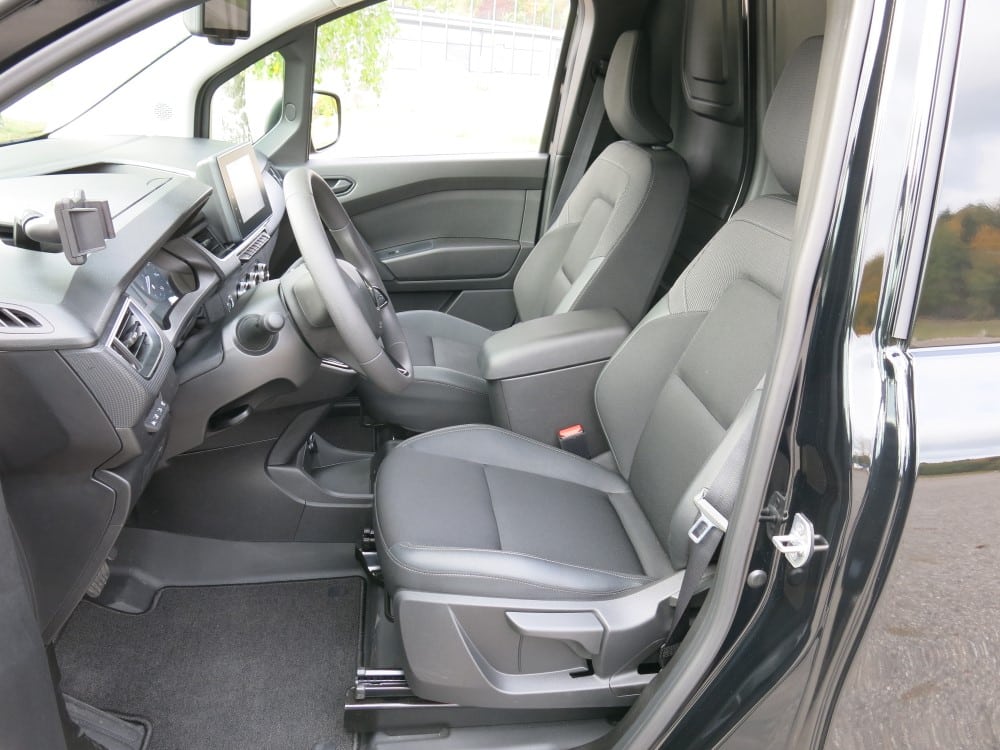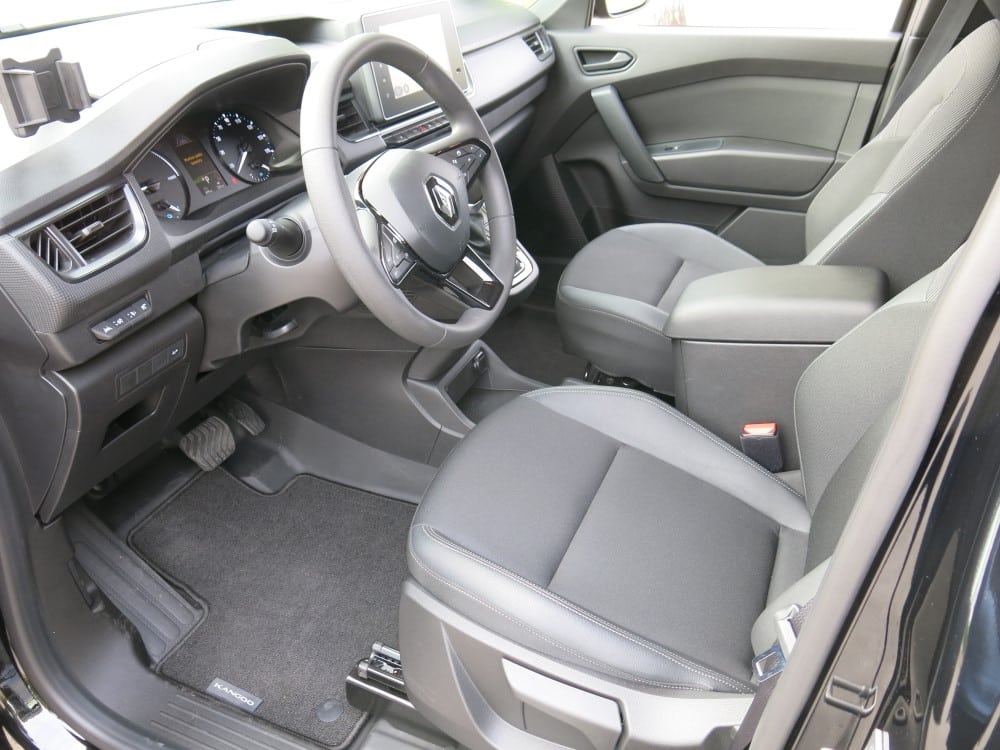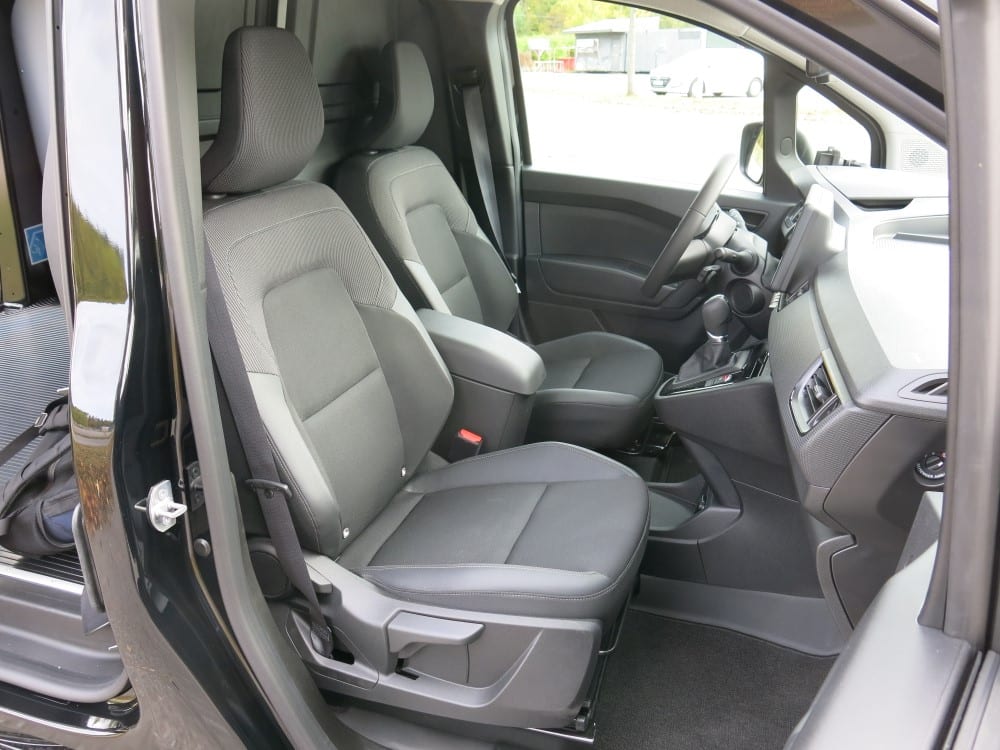More and more vans are now also available as electric vehicles. We tried Renault’s new Kangoo e-Tech.
The car is mainly intended for urban use, for example for delivery traffic or service operations. The theoretical range of just under 300 kilometres is quite sufficient for this.
But it’s not worth taking the car on the road if you have a slightly longer journey. The car easily consumes 20 kilowatt-hours per 100 kilometres on the road, so the 44-kilowatt battery is drained at a fairly brisk rate.

For road driving, it’s good to get just over 200 kilometres on a single charge. And that’s not driving at 120 km/h on the motorway. And that’s where the car’s biggest shortcoming is its range on the road.
In the driver’s seat, everything is fine. All the necessary switches are within easy reach and the multimedia display is clear.
Adjustments are easy to get right and the seats are comfortable.

The car accelerates rather sluggishly, especially in eco mode. Eco mode cuts the engine’s power in half and was of little benefit in terms of fuel consumption on the road.
There are plenty of compartments for storing small items, with a total of 44 litres. There are two cup holders in the centre console.
In front of the driver, a lidded compartment on top of the dashboard has a 12-volt outlet and two usb charging sockets.

The car handles well on bumpy roads and the steering response is precise. The noise of the car on domestic bad roads is quite noticeable, but not distracting.
The optional lane departure warning system works quite well. It can be adjusted to either warn or correct by turning the wheels. The corrective movements are moderate and not very distracting.
The car has chunky side mirrors and the rear-view mirror in the cabin is replaced by a screen that shows the image from the camera on the rear roof. The car also has a reversing camera, so you can see two images when reversing.

The digital rear-view mirror was a very pleasant novelty. It is clearly better than the traditional rear-view mirror. The camera itself is on the back edge of the roof, so it shoots from quite high up.
Of course, in a car like this, the boot is the most important area. The car is fitted with a proper rubber mat that covers the entire floor of the boot, and there are six attachment points. More anchor points are available if required.
The side door is quite narrow, but the two-piece rear door opens the full width of the boot. The boot is 3.3 cubic metres.

Three different charging options
The car’s 44-kilowatt battery is located under the boot and doesn’t reduce the load space at all.
Three different chargers are available for the car, depending on your needs. An 11-kilowatt three-phase charger is standard. It charges the traction battery from 15% to 100% in 3 hours and 50 minutes.
A 22-kilowatt charger is available at an extra cost. The most powerful option is the 80 kW rapid charger, which will charge the battery in half an hour and provide enough power for a 170 km drive.
The charging port is located in the middle of the mask, making it easy to connect the charging cable to the car. No need to worry about whether the charging socket is on the right or left.

The charging hatch can be opened either from inside the car or from the remote control of the key card. The switch on the remote control can be used to stop charging and unlock the charging cable from the car. This is a very handy feature.
The test-driven car was a shorter body model, as the longer version will not be available in Finland until next year. The longer model is 42 centimetres longer than the base version.
The longer model has almost a cubic metre more boot space.
The car has a load capacity of 535 kg, and the trailer has a maximum towing capacity of 1,500 kg.

Prices for the model range start at €43 290.
The test car was equipped with a wide range of accessories and was priced at €50 905.
Optional extras included electric handbrake, Easy Link with navigation, active emergency braking, blind spot monitoring, keyless start, lane departure warning, centre console and storage compartment, LED headlights, 80 kW fast charging, front and rear parking sensors, reversing camera, rearview camera and towing hook.

For whom?
A little car like this is a great vehicle for many people. It is particularly handy for urban distribution and for service providers who mainly operate in urban areas.
The test vehicle had a fixed partition between the cab and the passenger compartment, but a model is also available that allows the co-driver’s seat to be used as a luggage compartment. In this version there is no pillar between the driver’s side door and the side door of the luggage compartment.
The car is best suited for use where the maximum daily distance driven is just over 250 km. If fast charging is available at lunchtime, the daily driving distance can easily be doubled.

Renault Kangoo E-Tech 3.3 m3
Engine power: 90 kW/122 hp
Engine torque: 245 Nm
Service interval: 40 000 km/2 years
Battery: Lithium-ion (liquid cooled)
Net capacity of the battery: 44 kW
Driving range (WLTP): 283 – 285 km
Maximum charging power AC: 22 kW
Maximum charging power DC: 80 kW
Top speed: 135 km
Acceleration 0-100 km/h: 12 s.
Turning radius (from wheels) : 11.31 m
Tyre size: 195/65 R15
Load capacity: 535 kg
Tractive mass with brakes: 1500 kg
Tractive mass without brakes: 750 kg
Total mass: 2 220 kg
Vehicle length: 4.486 m
Width: 1.860 m (body)
Height: 1.864 m
Luggage compartment length: 1.810 m
Luggage compartment width: 1.248 (at the wheels)
Trunk height: 1.115 m
Lifting height: 0.635 m











